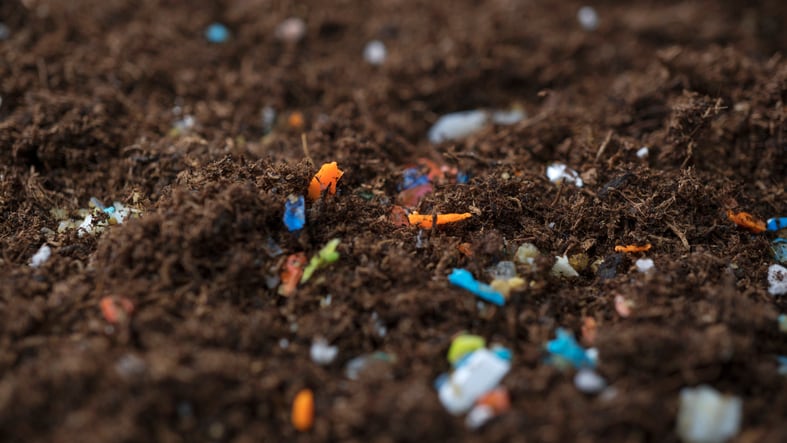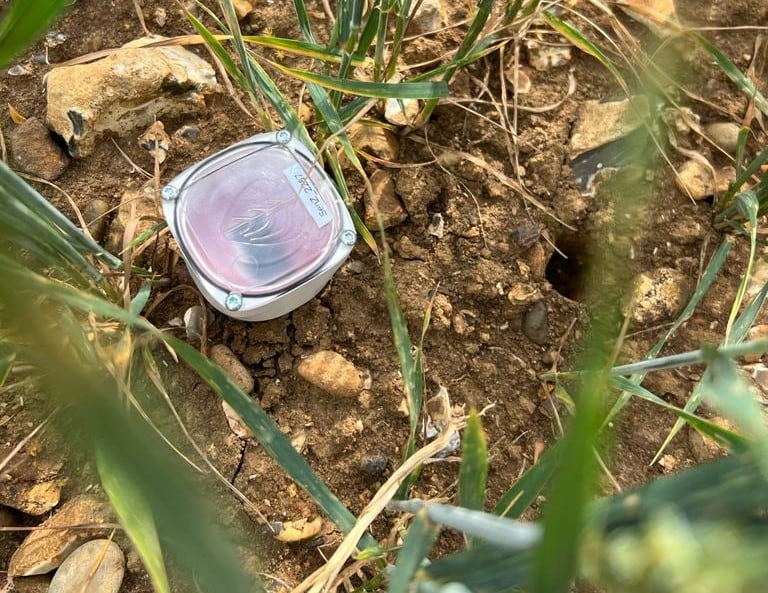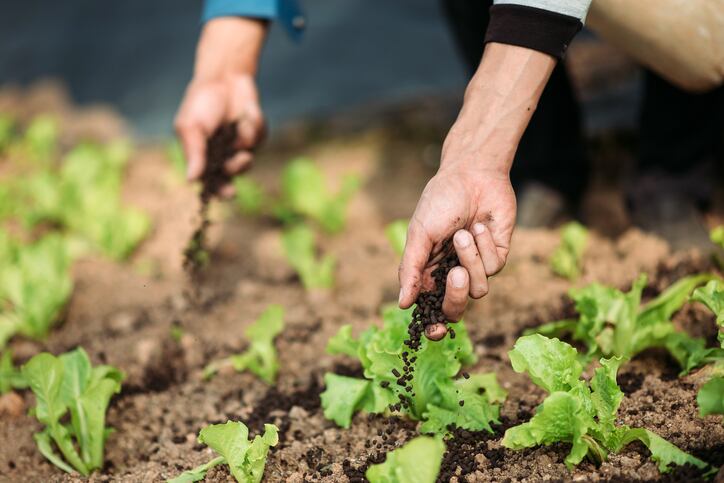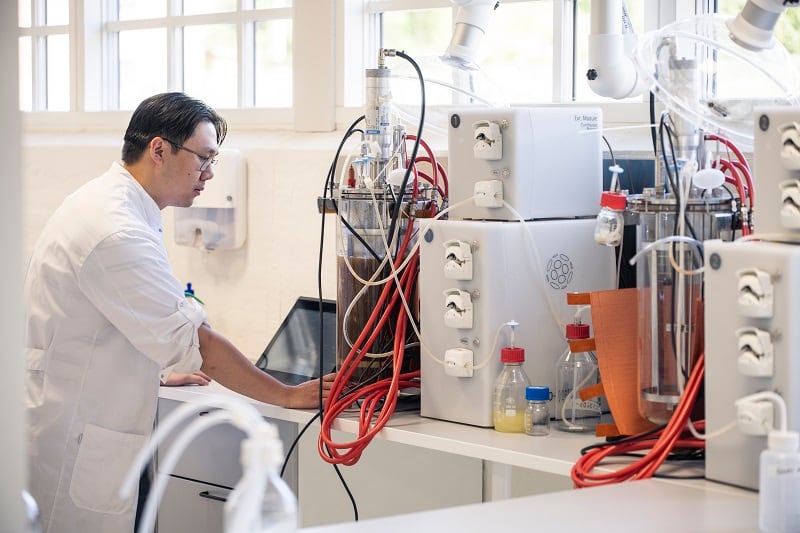One new study claims that agricultural fertilisers contribute substantially to microplastic concentrations in UK soil. Researchers from Lancaster University and Rothamsted Research examined changes to microplastic concentrations in agricultural soils between 1966 and 2022. In a paper published in the journal Nature, they revealed that 450 million tonnes of plastic are produced annually, of which 12.5 million tonnes are used in agriculture. Of all plastics created, 76% has become waste, 79% of which has accumulated in landfill and the natural environment.
Microplastic concentrations increased at higher rates in soils that are amended with either organic or inorganic fertiliser, they concluded, suggesting that agricultural fertilisers are an important contributor to microplastic concentrations in agricultural soils over time. “This study provides evidence that agricultural soils are receptors and reservoirs of microplastic pollution, a legacy which is growing over time,” the researchers wrote.
Microplastics have been shown to diminish crop quality, yield, and the physical, chemical, and biological properties of soil, but they added that the long-term effects of microplastic pollution in agricultural soils are still poorly understood.
Dr Sam Cusworth of the University of Lancaster who led the study, said, “The impacts of microplastic pollution on agricultural productivity are largely unquantified and unreliable - we simply don’t have enough evidence from longer-term field trials. Given that microplastic concentrations will likely continue to accumulate in agricultural soils from both agricultural and other sources, the effects of microplastics in farming systems should be better understood.”
The use of plastics in the agricultural sector is inevitable, the study stressed, and crucial to maintaining the food security and productivity of many regions. The use of plastics is deeply embedded in global agricultural systems and is likely to increase in the future due to population increase, stricter resource and agrochemical regulations, as well as the observed and expected impacts of climate change. Removing plastics from agriculture, what’s more, may have “severe repercussions”, they warned, for agroecosystems, global food security and greenhouse gas emissions, compromising human and planetary health.
However, to date there are no known means by which microplastic accumulation in soils can be reversed, and most reported interactions between microplastics and soil fauna, vegetation, microbiota and crop production appears to have negative effects. The researchers therefore called for a reappraisal of our use of the material. “The accumulation of microplastics in agricultural soils over time poses a direct threat to agricultural productivity and food security,” said Dr Cusworth. “With no immediate solution to remediate microplastic pollution on the horizon, it is critical to reassess our relationship with plastic use in agriculture and beyond.”
How microplastic travels so far
Reassessment is also crucial given that microplastics from fertilisers are blowing in the wind more often than once thought. According to a small-scale study published in Environmental Science & Technology Letters, microplastics are released from fields more easily than similarly sized dust particles, becoming airborne from even a slight breeze. Microplastics, or small bits of plastic less than 5 millimetres long, have appeared everywhere from clouds to heart tissues.
And with these plastics’ increasing prevalence in people and water supplies, they’ve also been found in sewage and wastewater, where they might go on to be found in biosolids recovered from a sewage treatment process and used as fertiliser. According to estimates by the US Environmental Protection Agency, over 2 million dry metric tons of biosolids — roughly half of the total amount collected by wastewater treatment plants — are applied to land each year. Because the plastics could carry other pollutants from the wastewater they originated from, they can be potentially dangerous when inhaled, the authors of the study warned.
Ozone damage?
Other researchers are sounding similar warnings about the potential dangers to the planet posed by the fact microplastics are able to travel such vast distances. Microplastic fibers are settling substantially slower than spherical particles in the atmosphere, revealed a new study published in Environmental Science & Technology. They can thus be transported in the atmosphere to almost any point of the globe and are present throughout the troposphere and possibly the stratosphere.
“Plastic fibres could reach much greater heights in the atmosphere than spheres of the same mass,” said Andreas Stohl of the University of Vienna who initiated the study. "This could have implications for cloud processes and even for stratospheric ozone, since it seems possible that microplastic fibres are abundant in the upper troposphere and might even reach the stratosphere. For instance, we cannot rule out that chlorine contained in these particles is harmful to the ozone layer.”
But we simply not know how much plastic, and in which sizes and shapes, is emitted to the atmosphere, he admitted, and we do not know what happens to it under the extreme conditions of the upper troposphere and stratosphere. “We are lacking very basic data. But given the dramatic increase in global plastic production, we have to be watchful."
What’s the potential damage to soil?
While the long-term understanding of the effects of microplastic pollution in agricultural soils is nascent, more research published in Environmental Microbiology suggests that moisture levels in the soil can impact the effects that microplastic pollution has on soil fungi.
By studying soil samples mixed with microplastics under different conditions, researchers in Germany found that when soil is well-watered, toxic chemicals in microplastics can leach into the soil and hinder soil fungal richness. With dry soil, however, the leaching of water-extractable chemicals is less pronounced and therefore less impactful on soil fungal structure.
The researchers also noted that under dry conditions, microplastics help soil hold water for longer, which could help mitigate the effects of drought. Although this could be considered a desirable scenario, these interactions imply complex challenges for land management.
“Microplastics in soil alter soil fungal communities, which negatively affect soil ecosystem functions,” said one of the study’s authors.
Chinese academics have also made attempts to uncover how tiny plastics threaten our soil and health. The widespread presence of microplastics and even smaller nanoplastics in our environment is raising alarm, said the researchers from Zhejiang Shuren University and China Agricultural University.
These particles, coming from various sources like industrial waste or larger plastic breakdown, are increasingly found in water, soil, and air. They're especially concerning for soil health as they may change bacterial behaviors and propagation of antibiotic resistance genes. Nanoplastics are particularly worrying due to their abundance and unique underlying mechanisms. Understanding how these plastics interact with soil bacteria is crucial for addressing this environmental and health issue.
In a study published online in Eco-Environment & Health they investigated the effects of tiny plastic particles, known as nanoplastics and microplastics, on the bacterial community structure and the spread of antibiotic resistance genes (ARGs) in soil. They focused on polystyrene, a common plastic pollutant. The research revealed that both nanoplastics and microplastics alter soil microbes and increase antibiotic resistance. Notably, nanoplastics, due to their small size and large surface area, had a more significant impact, even in small quantities. This led to changes in the dominant types of bacteria and enhanced the spread of ARGs, potentially weakening the effectiveness of antibiotics.
The authors said the findings highlight the growing concern over the presence of tiny plastics in soil and their implications for health and environmental sustainability and provide crucial insights for environmental policies and practices aimed at preserving soil health and preventing the escalation of antibiotic resistance.
"Our findings reveal a startling truth about the hidden dangers of nanoplastics in our environment,” said Lead researcher Jie Wang. “They not only disrupt soil microbial communities but also facilitate the spread of antibiotic resistance, posing a silent yet significant threat to ecological and public health."





